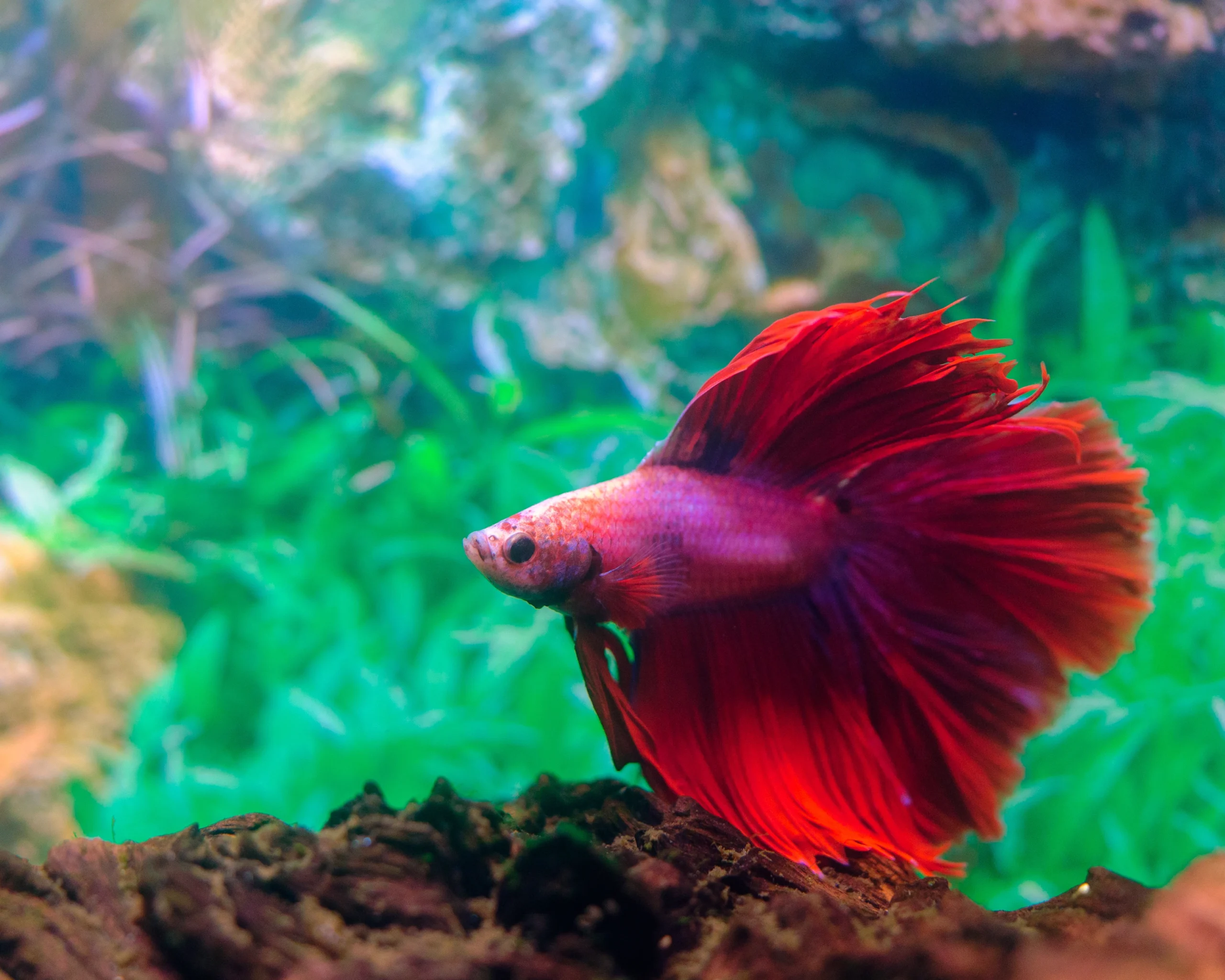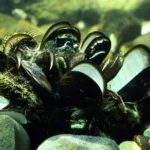
Welcome to our deep dive into the captivating world of Betta fish! These stunning aquatic creatures, often recognized for their vibrant colors and flowing fins, have become a favorite among aquarium enthusiasts worldwide. Whether you’re a seasoned fish keeper or a curious beginner, there’s always something new to learn about these fascinating fish. In this blog post, we’ll explore 25 interesting facts about Betta fish that highlight their unique behaviors, care requirements, and the intriguing characteristics that make them so beloved. From their breeding habits to their remarkable senses, join us as we uncover the secrets behind these enchanting fish and discover why they continue to capture the hearts of many. Let’s dive in!
Species: Betta fish belong to the species Betta splendens, which is part of the Anabantidae family. This species is particularly well-known for its vibrant colors and elaborate fin structures. Betta fish have been selectively bred for these traits, resulting in a wide variety of colors and patterns that are popular among aquarium enthusiasts. The species was first described in 1850 by the German naturalist Karl Heinz.
Lifespan: Betta fish typically live for 3 to 5 years in captivity, although some can live longer with optimal care. Factors influencing their lifespan include water quality, diet, and environmental conditions. Proper tank maintenance, including regular water changes and monitoring of temperature and pH levels, can significantly enhance their longevity. In contrast, Betta fish kept in poor conditions may experience health issues that shorten their lifespan.
Size: Adult Betta fish usually grow to be about 2.5 to 3 inches long. This compact size makes them suitable for small aquariums, but they still require adequate space to swim and thrive. It’s important to note that while Betta fish may be small, they need a well-maintained environment to flourish. Their size can vary slightly depending on factors like genetics and diet, with some individuals reaching up to 4 inches in length.
Colors: Betta fish come in over 100 different color combinations and patterns, making them one of the most visually stunning fish available for aquarists. Common colors include red, blue, green, purple, and even white. Additionally, specific patterns like solid, marbled, and butterfly can be observed. The diversity in color and pattern is a result of selective breeding, which has enhanced their aesthetic appeal and made them a favorite among fish keepers.
Fins: Betta fish have various fin types, including veil tail, crown tail, and double tail. The veil tail is the most common fin type, characterized by long, flowing fins that resemble a veil. Crown tails have spiky fins that give them a unique appearance, while double tails feature two distinct tail lobes. These fin variations not only contribute to their beauty but also play a role in their behavior and interactions with other fish.
Natural Habitat: Betta fish are native to shallow waters in Southeast Asia, including rice paddies, swamps, and floodplains. These environments are typically warm and rich in vegetation, providing Betta fish with ample hiding spots and food sources. The natural habitat also influences their behavior; for instance, Betta fish are accustomed to navigating through dense plants and can tolerate low-oxygen conditions due to their labyrinth organ.
Breathing: Betta fish have a labyrinth organ that allows them to breathe atmospheric oxygen, enabling them to survive in low-oxygen environments. This adaptation is crucial for their survival in the shallow waters of their natural habitat, where oxygen levels can fluctuate. The labyrinth organ is located above the gills and allows Betta fish to gulp air from the surface. This ability distinguishes them from many other fish species that rely solely on gills for respiration.
Territorial Behavior: Male Betta fish can become aggressive towards each other, often resulting in fights. This territorial behavior is a natural instinct, as males defend their space and resources from potential rivals. When housed together, males will display aggressive postures, such as flaring their fins and gills, and may engage in physical confrontations. For this reason, it is essential to house male Betta fish separately or in a carefully monitored community tank with compatible species.
Bubbles: Male Betta fish build bubble nests for breeding, which can be about 1 to 2 inches in diameter. These nests are created by the male using air bubbles coated with saliva, and they serve as a safe environment for the fertilized eggs. After spawning, the male will carefully place the eggs into the bubble nest and guard them until they hatch. This behavior highlights the parental instincts of male Betta fish, which is relatively uncommon among fish species.
Diet: Betta fish require a diet that is at least 40% protein for optimal health. In the wild, they primarily feed on insects and small invertebrates. In captivity, a balanced diet can be achieved through high-quality Betta pellets, frozen or live foods like brine shrimp and bloodworms. Providing a varied diet not only enhances their coloration but also promotes overall health, vitality, and longevity.
Temperature Range: The ideal water temperature for Betta fish is between 76°F and 82°F (24°C to 28°C). Maintaining this temperature range is crucial for their metabolic processes and overall health. Betta fish are tropical species, and temperatures below 76°F can lead to lethargy and weakened immune systems, making them susceptible to diseases. Conversely, temperatures above 82°F can stress them and lead to health issues. It’s essential to use a reliable aquarium heater to keep the temperature stable and to monitor it regularly with a thermometer.
pH Levels: Betta fish thrive in water with a pH range of 6.5 to 7.5. This slightly acidic to neutral pH level is ideal for their well-being and helps maintain their health. If the pH level is too high or too low, it can cause stress and lead to health problems such as fin rot or other diseases. Regular water testing is important to ensure that the pH remains within this range, and adjustments can be made using pH buffers or by performing water changes with properly conditioned water.
Tank Size: The minimum recommended tank size for a Betta fish is 5 gallons. While Betta fish can survive in smaller containers, a larger tank provides a more stable environment with better water quality and temperature control. A 5-gallon tank allows for proper filtration and aeration, which are essential for maintaining healthy water conditions. Additionally, a larger tank offers more space for swimming and enrichment, which can reduce stress and improve the overall quality of life for the Betta fish.
Breeding Time: The breeding process can take about 24 to 48 hours from spawning to the appearance of fry. During this time, the male Betta will court the female, performing elaborate displays to entice her. Once the female is receptive, they will spawn, and the male will fertilize the eggs. After spawning, the female should be removed to avoid aggression, while the male will guard the bubble nest until the eggs hatch. The fry typically become free-swimming within a few days and require infusoria or finely crushed food for initial feeding.
Fry Count: A female Betta can lay anywhere from 20 to 50 eggs in a single spawning. The number of eggs can vary based on the health and age of the female, as well as environmental conditions. The eggs are small and adhesive, allowing them to stick to the bubble nest that the male has prepared. After fertilization, the male Betta takes on the responsibility of protecting the nest from potential threats and ensuring the eggs develop properly until they hatch.
Color Change: Betta fish can change color based on mood, health, and environment. Stress, excitement, and aggression can cause their colors to intensify or darken. For instance, a Betta may display brighter colors when feeling threatened or during mating displays. Additionally, changes in health, such as illness or poor water conditions, can lead to dulling of colors. This ability to change color is a form of communication and can also serve as a warning signal to other fish.
Lateral Line: Betta fish have a lateral line system that helps them detect movement and vibrations in the water. This sensory organ runs along the sides of their body and is composed of specialized cells that can sense changes in pressure and water currents. The lateral line is essential for navigation, hunting, and avoiding predators in their natural habitat. It allows Betta fish to react quickly to their surroundings, enhancing their ability to thrive in both wild and aquarium settings.
Social Structure: Betta fish can sometimes coexist with certain species, such as neon tetras or corydoras, but care must be taken. While male Betta fish are territorial and aggressive towards other males, females can be more social, especially when kept in groups known as sororities. However, introducing other fish requires careful consideration of tank size and the temperament of the tank mates. Providing plenty of hiding spots and visual barriers can help reduce stress and aggression in a community tank.
Breeding Age: Betta fish are typically ready to breed at around 4 to 6 months of age. At this age, both males and females reach sexual maturity, and their physical characteristics become more pronounced. Males develop longer fins and more vibrant colors, while females may exhibit a more rounded belly when ready to spawn. It’s essential to ensure that both the male and female are healthy and properly conditioned before attempting to breed them, as this increases the chances of successful spawning and healthy fry.
Breeding Age: Betta fish, also known as Siamese fighting fish, typically reach breeding maturity at around 4 to 6 months of age. During this time, males will display vibrant colors and elaborate fin displays to attract females. The breeding process involves a courtship ritual where the male will build a bubble nest at the water’s surface. Once the female is receptive, she will lay eggs, which the male will then fertilize and carefully place in the bubble nest. It’s essential for breeders to provide a suitable environment with stable water conditions and appropriate tank size to ensure successful breeding and the health of both parents and offspring.
Fin Regrowth: Betta fish possess a remarkable ability to regenerate their fins if they become damaged due to stress, aggression, or environmental factors. This regenerative process can take several weeks to months, depending on the extent of the damage and the fish’s overall health. Factors such as water quality, diet, and tank conditions play a crucial role in the regrowth process. Providing a stress-free environment with clean water and a balanced diet rich in nutrients can significantly enhance the healing process and support the regrowth of their beautiful fins.
Aquarium Decor: Betta fish thrive in environments that offer plenty of hiding spots and stimulation. They appreciate aquariums decorated with plants, caves, and other structures that mimic their natural habitat. Live or silk plants are often recommended, as they provide shelter and reduce stress for the fish. Additionally, having decorations allows Betta fish to exhibit their natural behaviors, such as exploring and hiding, which can contribute to their overall well-being. When setting up a tank, it’s important to avoid sharp objects that could injure their delicate fins.
Color Patterns: Betta fish are renowned for their stunning color patterns, which can include solid, marbled, and multi-colored variations. Their colors can range from vibrant reds and blues to softer pastels, and they may even exhibit iridescent qualities. The genetic makeup of each fish determines its color and pattern, leading to a wide variety of appearances among different breeds. Bettas are often selectively bred for their colors and fin shapes, resulting in unique and beautiful specimens that are highly sought after by aquarium enthusiasts.
Respiration Rate: Betta fish have a unique respiratory system that allows them to breathe air directly from the surface. At rest, their respiration rate is approximately 3 to 4 times per minute. This ability is facilitated by a specialized organ called the labyrinth organ, which enables them to extract oxygen from the air. While they can survive in lower oxygen environments, it’s crucial to maintain good water quality and aeration in their tanks to ensure their health. Observing their breathing patterns can also help aquarists identify potential stress or health issues.
Senses: Betta fish are equipped with excellent vision, allowing them to see a wide range of colors, including ultraviolet light, which is invisible to humans. Their keen eyesight is essential for locating food and navigating their environment. Betta fish also possess a well-developed lateral line system, which helps them detect vibrations and movement in the water, aiding in their hunting and social interactions. This combination of visual and sensory capabilities makes them highly adaptive and aware of their surroundings, contributing to their successful survival in the wild.
Popularity: Betta fish are among the most popular aquarium fish worldwide, often ranking within the top three species kept by hobbyists. Their vibrant colors, unique personalities, and relatively easy care requirements make them an appealing choice for both novice and experienced aquarists. Betta fish are also known for their interactive behaviors, as they can recognize their owners and may even respond to training. Their popularity has led to a wide variety of breeds and colorations available in the pet trade, further enhancing their appeal as a captivating addition to home aquariums.
Frequently Asked Questions about Betta Fish:
1. What size tank is best for Betta fish?
Betta fish thrive in a tank that is at least 5 gallons in size. While some people may keep them in smaller bowls, a larger tank provides better water stability, filtration, and space for swimming and exploring. A 5-gallon tank allows for proper filtration and heating, which are crucial for maintaining a healthy environment. Additionally, a larger tank can accommodate decorations and plants, giving the Betta fish hiding spots and stimulation.
2. Can Betta fish live with other fish?
Betta fish can be kept with other fish, but caution is necessary. Male Betta fish are known for their aggressive behavior, particularly towards other males and fin-nipping species. Compatible tank mates include peaceful fish that do not have long, flowing fins, such as neon tetras, corydoras catfish, or certain species of rasboras. It’s essential to monitor interactions closely, especially during the introduction phase, and to provide ample hiding spots to reduce stress.
3. What do Betta fish eat?
Betta fish are carnivorous and require a diet rich in protein. High-quality Betta pellets should form the staple of their diet, supplemented with frozen or live foods such as bloodworms, brine shrimp, and daphnia. It’s important to feed them in small amounts, 1-2 times a day, and to remove any uneaten food to prevent water quality issues. A varied diet helps ensure they receive all necessary nutrients for optimal health.
4. How often should I change the water in a Betta fish tank?
Water changes are crucial for maintaining a healthy environment for Betta fish. It’s recommended to change 25-50% of the water weekly, depending on the tank size and filtration system. In a smaller or unfiltered tank, more frequent changes may be necessary. Always use a water conditioner to remove chlorine and chloramine from tap water before adding it to the tank. Regular water changes help keep ammonia and nitrate levels low, ensuring a safe habitat for your Betta.
5. How can I tell if my Betta fish is sick?
Signs of illness in Betta fish can include changes in behavior, such as lethargy, loss of appetite, or hiding more than usual. Physical symptoms may include discoloration, frayed fins, swelling, lesions, or white spots on the body (which could indicate ich). If you notice any of these signs, it’s essential to assess water quality and parameters first. If issues persist, consider consulting a veterinarian who specializes in fish or researching appropriate treatments for the specific illness.
6. Do Betta fish need a heater?
Yes, Betta fish require a heater to maintain a stable water temperature between 76°F and 82°F (24°C to 28°C). They are tropical fish and thrive in warm water. Sudden temperature fluctuations can lead to stress and health issues. A reliable aquarium heater with a thermostat is essential for keeping the water within the ideal range, especially in cooler climates or during winter months.
7. How can I tell the gender of my Betta fish?
Determining the gender of Betta fish can be done by observing several physical characteristics. Male Bettas typically have longer, more flowing fins and vibrant colors compared to females, who tend to have shorter fins and more subdued coloration. Additionally, males have a more pronounced body shape, while females are often rounder, especially when they are ready to breed. Males will also display aggressive behaviors and flare their fins when they see other males, whereas females are generally less aggressive.
8. Can Betta fish jump out of their tanks?
Yes, Betta fish are known to be jumpers, and they can leap out of their tanks if given the opportunity. This behavior can occur if they feel threatened or if the water surface is too close to the tank’s edge. To prevent accidents, it’s advisable to use a tank lid or cover that allows for proper aeration while keeping your Betta safe. Regular tank maintenance and ensuring a secure environment can help reduce stress and the likelihood of jumping.
9. How long do Betta fish live?
With proper care, Betta fish can live anywhere from 3 to 5 years, though some may live longer under optimal conditions. Factors such as water quality, diet, tank size, and overall care play a significant role in their lifespan. Providing a stress-free environment, maintaining good water conditions, and feeding a balanced diet can contribute to a longer, healthier life for your Betta fish.
10. What is the best way to introduce a new Betta fish to an aquarium?
Introducing a new Betta fish to an aquarium should be done gradually to minimize stress. Start by acclimating the new Betta to the tank environment. This can be done by floating the sealed bag containing the Betta in the tank for about 15-20 minutes, allowing the water temperature to equalize. After that, gradually add small amounts of tank water to the bag over the course of another 15-30 minutes to help the fish adjust to the water chemistry.
Once acclimated, gently release the Betta into the tank without adding the water from the bag, as it may contain harmful substances. It’s best to turn off the tank lights for a few hours after introducing the new fish to reduce stress. Monitor the Betta closely for any signs of aggression or stress, especially if there are other fish in the tank. If aggression occurs, it may be necessary to separate the Betta until it becomes accustomed to its new environment.









